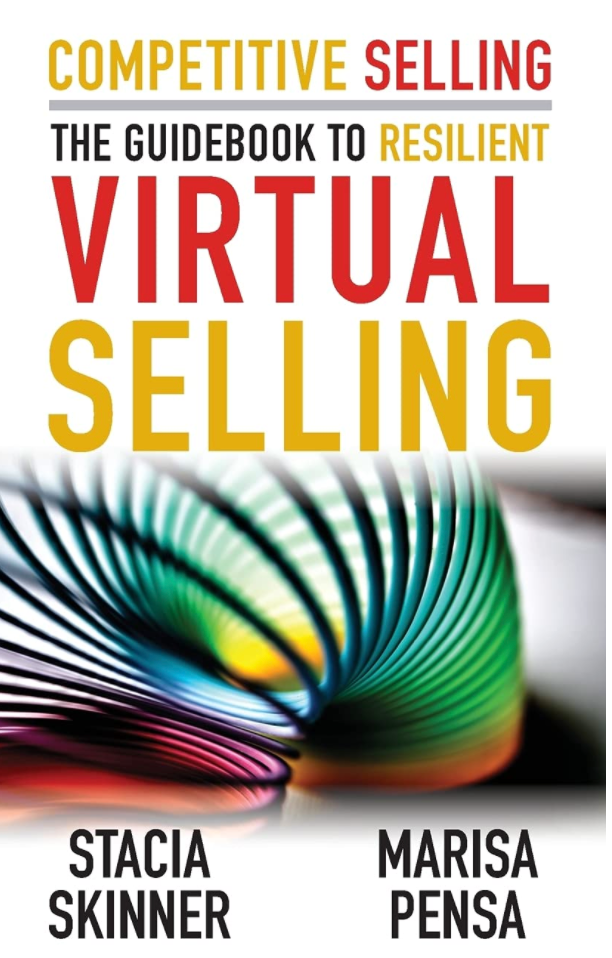Prospecting
This full day program introduces a unique and practical approach to setting appointments, whether on the phone or face-to-face. Using a proven calling method and scripting, this program yields immediate results.
From understanding how to get to the decision maker to handling objections, to gaining more return calls from voicemail, participants will be introduced to a process that works. From the novice to the seasoned professional, this program will provide a fresh approach that will gain them the competitive edge.
Delivery Options:
- On-site training
- Webinar series
RECENT ARTICLES
(REACTIVE HOPIUM VS. PROACTIVE REALITY)

“As long as everything is exactly the way I want it I’m totally flexible!” It’s funny but it’s also true. We can all relate to this quote on some level. Think about it: when everything is going as planned, it’s easy to keep a good attitude and be as flexible as needed. But what do you do when things are out of your control and you need to deal with them anyway? 2020 threw us a lot of curveballs that we were left to figure out how to handle. Every aspect of our lives was upended. Workwise, we all had to deal with sudden shifts and drastic changes like working entirely from home while dealing with added personal and professional stress like schedule changes, working in the same rooms as our spouses, learning new technology, taking care of kids or other family members at home, distractions like dogs barking, construction going on nearby, or unreliable internet connections. Our normal routines were flipped upside down. This is where resiliency comes in. Oxford defines resilience as “the capacity to recover quickly from difficulties; toughness. The ability of a substance or object to spring back into shape; elasticity. ” 2020 and the sudden reliance on virtual selling filled a lot of salespeople with uncertainty, doubt, and fear. This included us! Change has a way of making these kinds of emotions come to the surface. But instead of ignoring these emotions or feelings, we all need to embrace the negative, feel the pain, and take a moment to analyze our feelings. Then, we need to flex our resiliency muscles and do our best to spring back into shape. While everyone experiences change differently, these are five common stages people go through as they deal with change: Immobilization Denial Incompetence Acceptance Testing new behaviors Let’s take a quick look at each. Immobilization At this stage, you might feel shocked and think: “I can’t believe this is happening. What am I going to do?” You feel frozen in place or immobilized, with overwhelming negative thoughts about the situation. For many inside and outside sales professionals 2020 felt like the end. Outside sales pros thrive on interacting with prospects and clients in-person, but that abruptly stopped. You were forced to do everything remotely. It was a shock to the system and you were left thinking, “How am I supposed to build and maintain my relationships now?” Even inside sales pros experienced a somewhat similar type of immobilization. You lost the easy camaraderie you were used to having. The bond between teammates when you got off a great call and celebrated by high-fiving each other was gone. Or, if it wasn’t such a great call, you were there to support one another. Denial “Everything will get back to normal soon. I’ll just wait till I can see my clients again.” It’s a natural reaction to deny situations that make us uncomfortable or require us to change what we’re used to doing. Virtual selling wasn’t anything new when March 2020 hit. But for a lot of sales professionals, it was this idea of being forced into a specific way of selling that didn’t sit well. You might have wanted to keep doing what you had always done. Incompetence “Yikes, I’m never going to hit my goal in time for the end of the quarter. I can’t do this; I just don’t get it.” When you’re learning something new, or adapting to change, it can be frustrating. You want to be successful immediately, but there’s a learning curve that requires patience, practice, and persistence. Acceptance At this stage, you’ve finally given in to the idea that this new way of doing things is here to stay and you need to change. Now you’re thinking, “How can I be successful? What can I change right now to move forward?” This doesn’t mean you have to figure it out on your own. It’s very much the opposite. Asking for help is okay and encouraged. Working with other colleagues or a mentor gives you a different perspective and a different way of looking at change. This will only help you become more resilient. Testing new behaviors Change is hard. It takes time. You’ll make mistakes. But, when you embrace the messy and learn from each experience, you will do better. The key to making progress is focusing less on making things perfect and more on simply getting started. You may still be going through these five stages right now, and that’s good. They’re your pathway to embracing change and developing resilience. Remember, sales is an evolution; how we sell has to be ever-changing, too. That means being open to the newest tools, technologies, and tactics that will help you build your resilience even in the toughest situations. Note: This is an excerpt from our soon-to-be-released book, Competitive Selling: The Guidebook to Resilient Virtual Selling .



